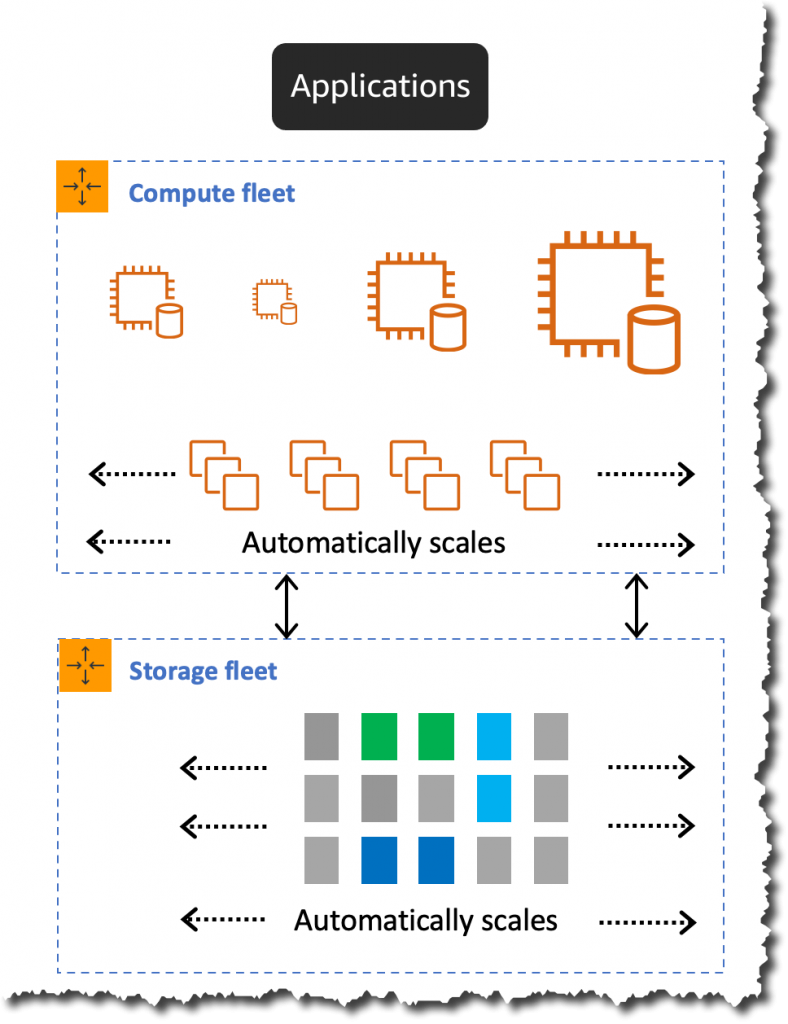Recently, AWS announced the general availability of the second version of Amazon Aurora Serverless, an on-demand, auto-scaling configuration for Amazon Aurora. The second version is generally available for both Aurora PostgreSQL and MySQL, featuring the independent scaling of compute and storage.
The company released the first version of Amazon Aurora Serverless in August 2018 as a serverless database offering that automatically starts, scales, and shuts down capacity with per-second billing for applications with less predictable usage patterns. Customers could leverage this serverless option in Aurora by creating an endpoint through the AWS Management Console, and Aurora Serverless takes it from that point onward.
However, due to scale up/down speeds, failover time, and lack of Aurora provisioned cluster features flagged since the release, AWS released a second version in a preview that scales in a fraction of a second and introduces multi-AZ support, global databases, and read replicas. And now, this second version is generally available for the MySQL 8.0 and PostgreSQL 13 compatible editions of Amazon Aurora, including a new key feature according to the company with the separation of compute and storage. As a result, storage automatically scales as the amount of data in the database increases, and compute scales independently when needed (not every workload needs a constant amount of compute).
In an AWS press release on Amazon Aurora Serverless Version 2, Swami Sivasubramanian, vice-president of Databases, Analytics, and Machine Learning at AWS, said:
With the next generation of Amazon Aurora Serverless, it is now even easier for customers to leave the constraints of old-guard databases behind and enjoy the immense cost savings of scalable, on-demand capacity with all of the advanced capabilities in Amazon Aurora.
According to the User Guide of Amazon Aurora Serverless Version 2, the service is architected from the ground up to support serverless DB clusters that are instantly scalable. Furthermore, it is engineered to provide the same security and isolation as provisioned writers and readers. Additionally, the documentation provides the following explanation:
By using Aurora Serverless v2, you can create an Aurora DB cluster without being locked into a specific database capacity for each writer and reader. You specify the minimum and maximum capacity range. Aurora scales each Aurora Serverless v2 writer or reader in the cluster within that capacity range. By using a Multi-AZ cluster where each writer or reader can scale dynamically, you can take advantage of dynamic scaling and high availability. Aurora Serverless v2 scales the database resources automatically based on your minimum and maximum capacity specifications. Scaling is fast because most scaling events operations keep the writer or reader on the same host.
Marcia Villalba, a senior developer advocate for Amazon Web Services, stated the following on the scaling down in an AWS News blog post:
For scaling down, Aurora Serverless v2 takes a more conservative approach. It scales down in steps until it reaches the required capacity needed for the workload. Scaling down too quickly can prematurely evict cached pages and decrease the buffer pool, which may affect the performance.
Lastly, Amazon Aurora Serverless capacity is measured in so-called Aurora Capacity Units (ACUs). Each ACU combines approximately two gibibytes (GiB) of memory, corresponding CPU, and networking. According to Villalba, with Aurora Serverless v2, the starting capacity can be as small as 0.5 ACU, and the maximum capacity supported is 128 ACU. In addition, it helps fine-grained increments as small as 0.5 ACU which allows the database capacity to match the workload needs closely.
However, AWS Serverless Hero, Jeremy Daly, made the following comment on Twitter about Aurora Serverless Version 2:
There are two major problems with Serverless Aurora v2 that fundamentally miss the mark of true #serverless(ness). One is the inability to auto-pause (as Mike mentions), and the other is the missing Data API. These might make it unusable (for now).
The second version of Amazon Aurora Serverless Version 2 is currently available in various regions in the Americas, Europa, Asia, and the Pacific. More details are available on the documentation pages, and pricing can be found on the pricing page.



